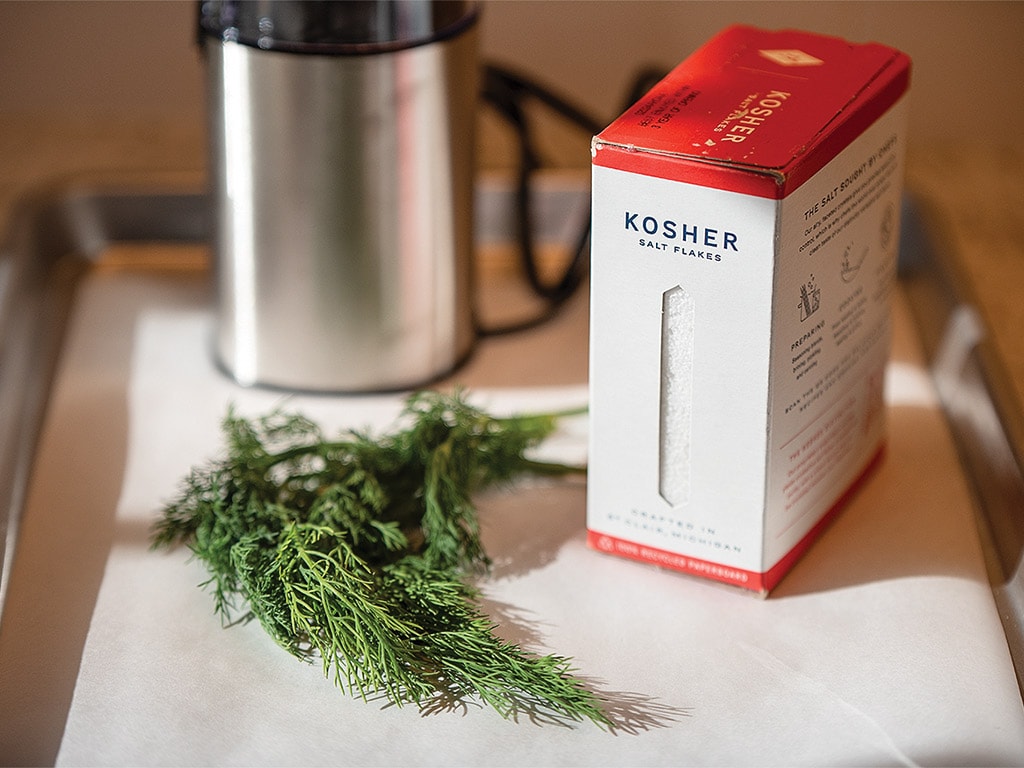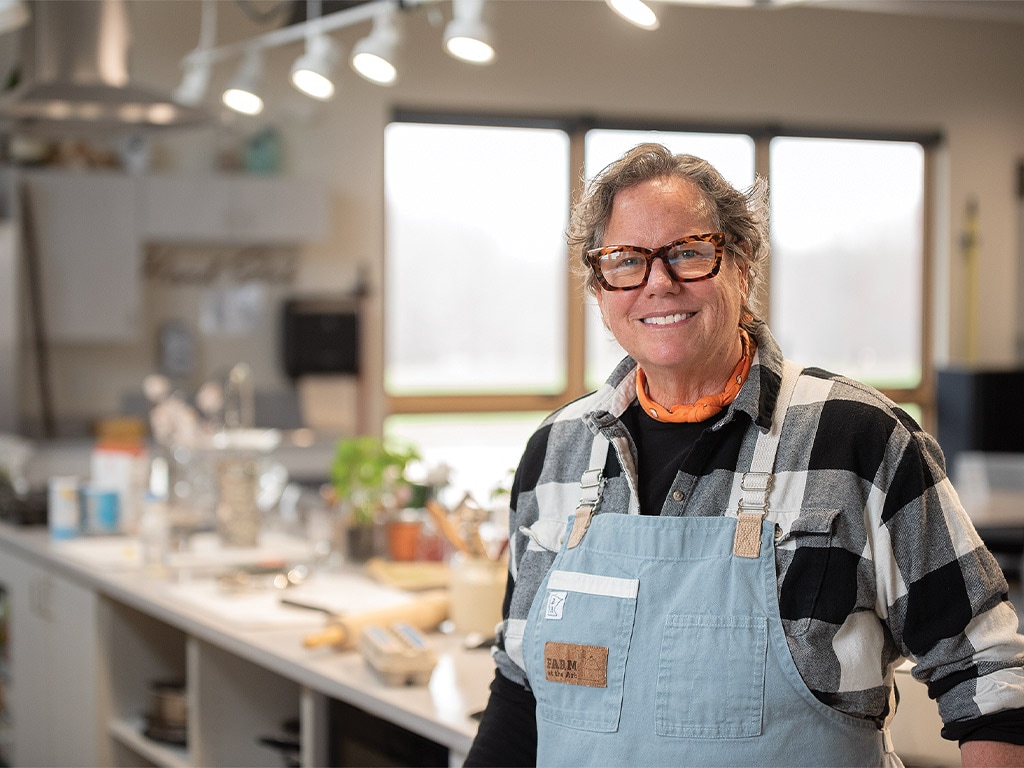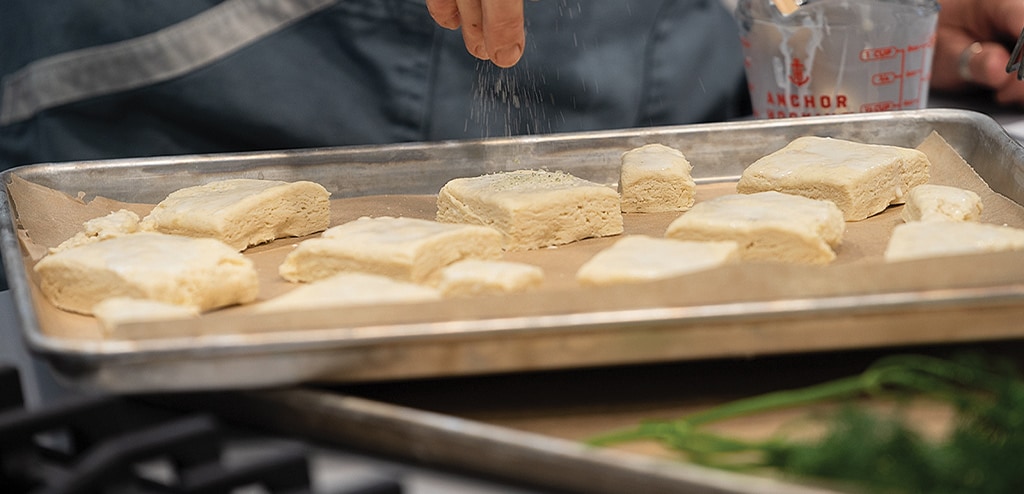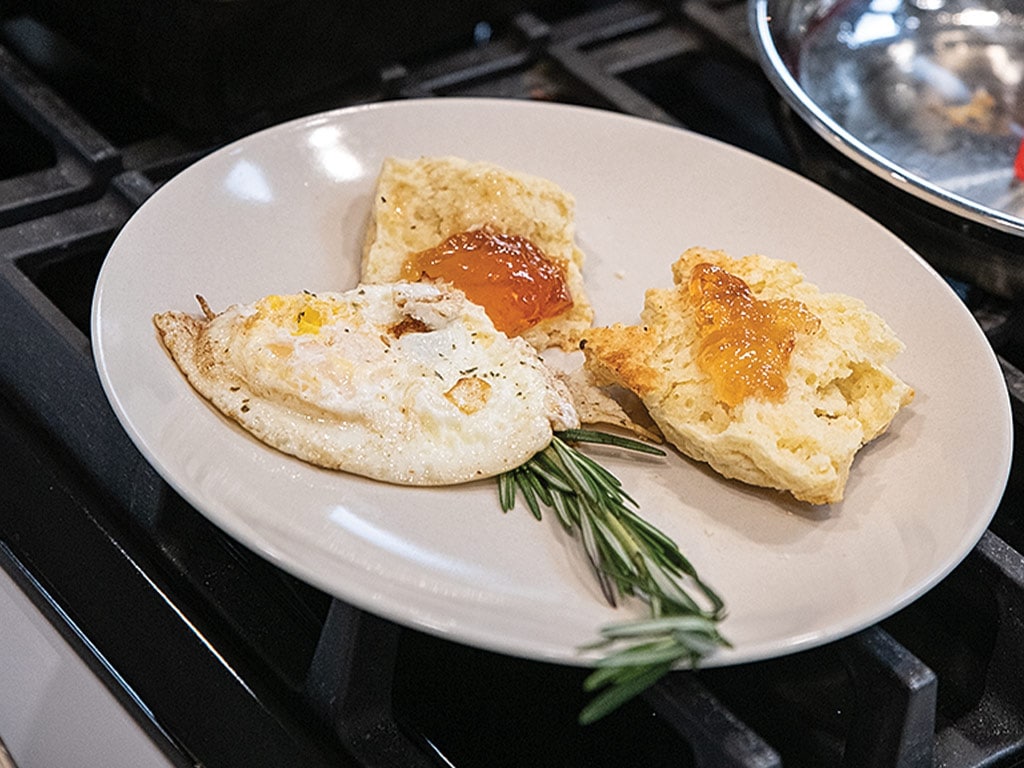Specialty/Niche September 01, 2024
Overflowing Herbs
Ways to have fresh herbs all winter long.
by Katie Knapp
Are you drowning in dill? Did you have a bumper crop of basil? Do you have loads of lavender?
By this time of year your herb garden is likely growing way faster than you can use all the luscious flavors. Chef Beth Fisher has a surprisingly simple take on how to preserve your herbs so all your winter dishes can still have the fresh flavors you've enjoyed all summer long.
All it takes is a spice (or coffee) grinder and salt or sugar.
"Meet all my sugars and salts," Fisher said to a group of ladies visiting her newly minted demonstration kitchen at the University of Minnesota Landscape Arboretum's farm, nicknamed the Farm at the Arb.
After decades of farm-to-table cooking in well-known Minneapolis restaurants and for private clients, Fisher is leaning into her love of teaching and helping develop the Farm at the Arb's culinary education program.
The Minnesota Landscape Arboretum, which opened in 1958 on the eastern side of the Minneapolis-St. Paul metro area, showcases 1,200 acres of public gardens. It is also home to several U of M horticulture and fruit research programs, including that of the Honeycrisp apple.
The Arboretum opened a new area in 2019 that was previously a dairy farm. The barn was restored, and plots, exhibits, and events have been developed to provide production agriculture education and research opportunities.
Last year, the Myers Education Center opened within the Farm at the Arb and now houses the Arboretum's education program and Minnesota's Master Gardeners. Inside the new farmhouse-looking building is a state-of-the-art demonstration kitchen, and outside is a masterfully designed foodscape.
Fisher says the goal in the Myers Kitchen is to teach people how to cook with what they grow.
Having taught classes for home chefs for decades at other cooking schools in the city, her Farm at the Arb classes are a little bit different. "I want it to be more of an experience because we are on this beautiful farm with good food right outside."
One of her mantras as a chef is that "you eat with your eyes. If the dish is looking beautiful, your brain is already telling you it's going to taste good." Using ingredients you have grown and picked yourself only adds to that, she believes.
Above. Her goal is to teach people how to cook with what they grow in their garden. One simple method is to preserve abundant herbs with salt to use all winter. Chef Beth Fisher teaches "garden-to-plate" cooking in the Myers Education Center kitchen at the Minnesota Landscape Arboretum's Farm at the Arb. She demonstrated to visitors how you can enhance the flavor of a simple biscuit and egg breakfast using dill salt and rosemary sugar as the finishing touches.
Keeping flavors bright. "It's the last touch of something fresh on top that you really taste," Fisher explains. "I teach all my students that whenever you can add a splash of fresh citrus, a dash of vinegar, or pinch of fresh herbs at the end, you will enhance your dish's flavor. Using preserved herbs is an easy way to do this through the winter."
There are many ways to preserve herbs. In addition to making pesto, salad dressings, or your own dried spice blends, Fisher recommends preserving your fresh herbs in sugar or salt. This process helps retain the bright, bold flavors that make summer dishes pop, she says.
"I find that just about any herb will work: basil, cilantro, dill weed, tarragon, oregano, mint, scented geranium, lavender…and even rosemary. It's very simple and can be a fun experiment to see what you like," she says.
Here are her instructions:
- Place fresh herbs in a clean coffee/spice grinder and add sugar or salt at a 1 cup to ¾ cup ratio.
- Shake while grinding to ensure moist herbs incorporate well with the sugar or salt.
- Unplug the grinder and flip it to get the mixture into the lid.
- Use a rubber spatula to spread the mixture onto a parchment paper-lined baking pan.
- Set aside in a cupboard or extra (turned off) oven and allow to dry for up to a week.
- Buzz again in the grinder to your desired consistency.
- Store in an airtight container.
"It really is that easy and doesn't cost more than $20 for a grinder and some sugar or salt," she said encouragingly to those watching her demonstration and savoring her samples. They were amazed at how the fresh flavor and bright color remained after the mixture was dry and shelf stable.
Fisher says this is also a great way to experiment with flavor combinations. "I try not to get too weird with flavors, but why not? Dill doesn't just have to be for pickles. Why not put that gorgeous, green flavor on a biscuit in the morning or in a salad?"
Other suggestions she has are to "sprinkle basil salt over tomatoes or use dill salt on top of salmon or a salad. Anywhere I can use cinnamon sugar I might use rosemary sugar instead as another way to bring my garden to my plate."
She also encourages cooks to experiment with the type of sugar or salt they use. "I like to use Diamond Crystal salt because the kosher flakes are fluffy and forgiving. If you have a favorite sea salt, use it, and try various type of sugars until you get the flavor you like best." ‡
Read More

AGRICULTURE, EDUCATION
Thousand-Year Timeline
Traditional Maya crops position this farm for the future.







